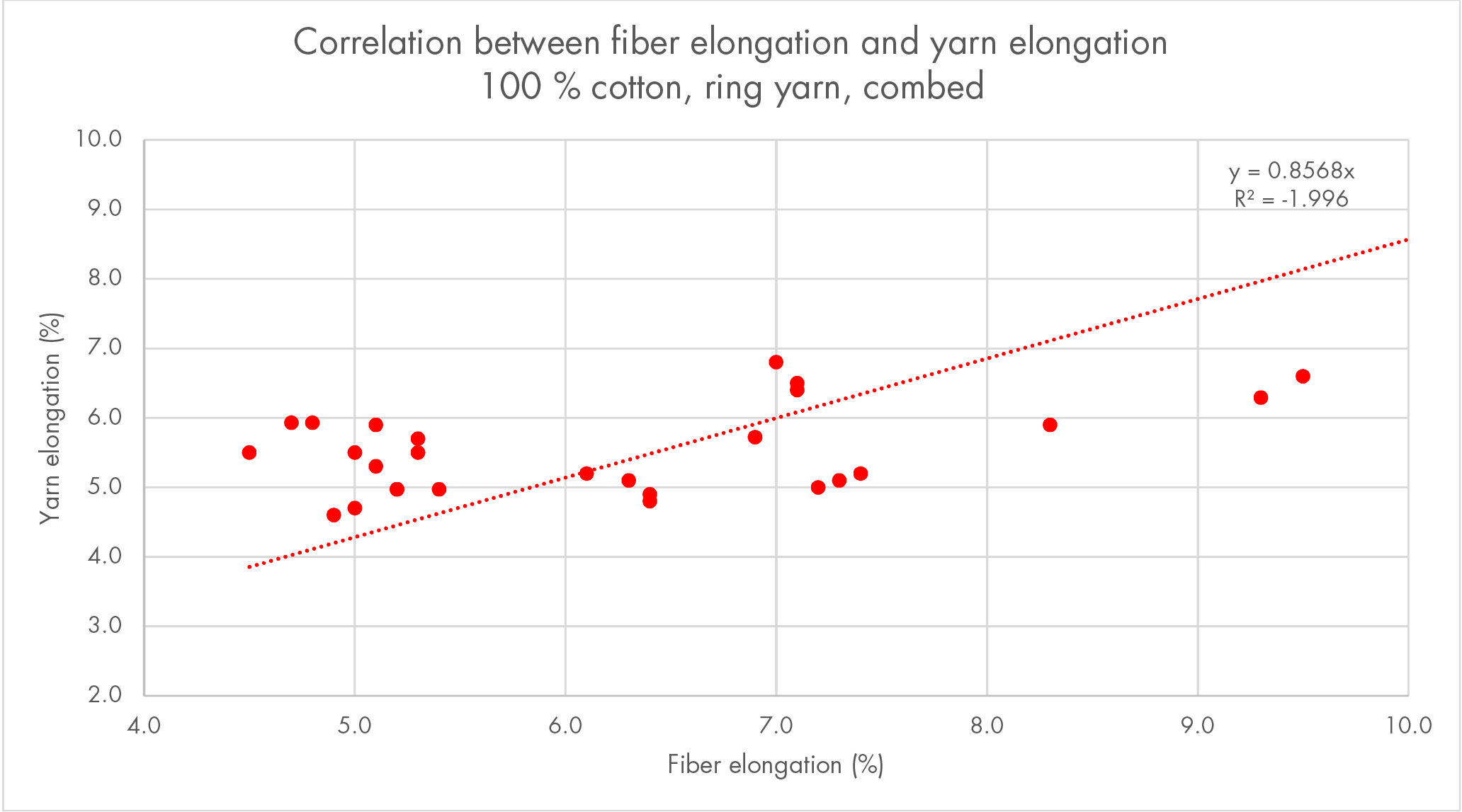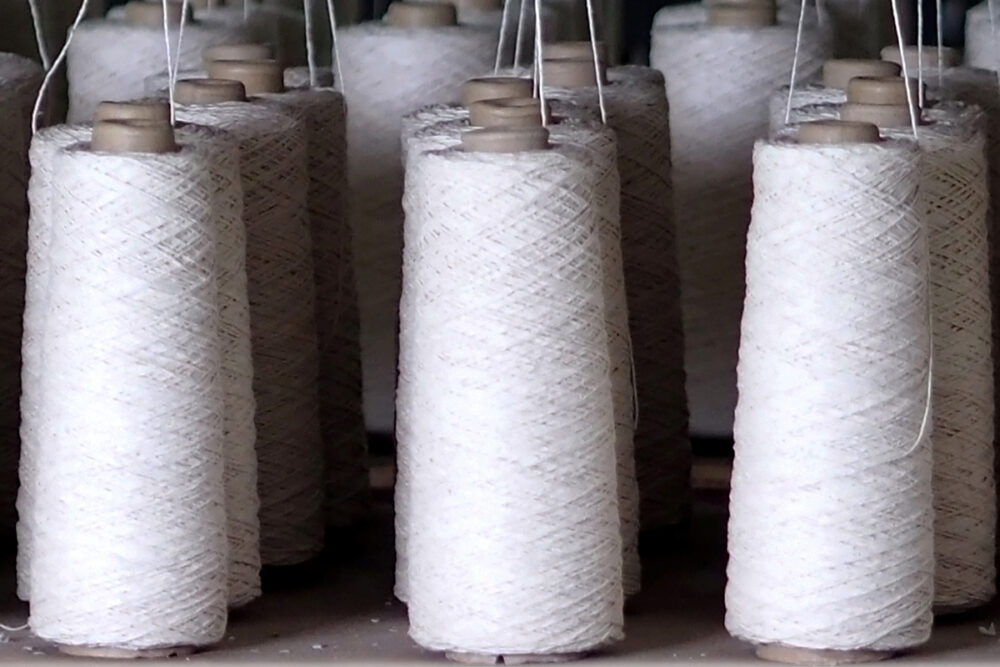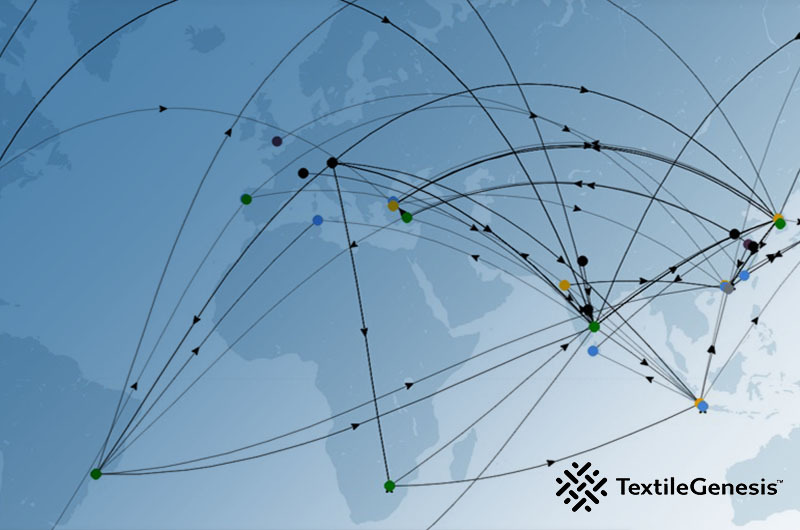The latest data from USTER® STATISTICS gives spinners an extra competitive edge
The famous USTER® STATISTICS benchmarks have been a vital source of quality data for textile fibers and yarns since 1957. The latest edition, USTER® STATISTICS 20181, opens up even more possibilities for quality improvements with the most recent data categories.
The value of USTER® STATISTICS is already acknowledged worldwide, allowing yarn producers and their trading partners to compare quality levels objectively against global market standards.
Among several quality characteristics introduced for the first time in USTER® STATISTICS 2018 are two which respond to changing market needs by dealing with fiber characteristics2. Benchmarking against these results will give spinners another boost in delivering constant yarn quality.
Fiber elongation
The elongation of cotton fiber depends more on the type of cotton than the fiber length. In conjunction with fiber tenacity, fiber elongation influences the yarn elongation and thereby the processing behavior of the yarn, in that higher values will typically perform better in the weaving mill. For this reason, it was obvious to include fiber elongation in future USTER® STATISTICS.
Analyses of USTER databases shows that the correlation between fiber elongation and yarn elongation of a combed cotton ring yarn is at a level of 85%. Although the twist multiplier and yarn production speed also have a huge impact on yarn elongation, the basis for high yarn elongation actually comes from the fiber.

Distinction between seed coat nep and fiber nep
The distinction between fiber and seed coat nep count in USTER® STATISTICS 2018 is based on market observations. Previously, only the total nep count was considered.
The total nep count is the sum of fiber neps and seed coat neps. High nep counts indicate aggressive ginning, low maturity, and poor maintenance at mechanical harvesting and ginning. Ginning mills today increasingly focus on productivity rather than quality. At the same time, ginning mills have not been upgraded to match the increased volumes of cotton. This suggests that a more accurate evaluation of cottons is now advisable for spinning mills, and this can be achieved by assessing fiber neps and seed coat neps separately. This more detailed analysis provides new benefits.
Firstly, the mill can optimize laydowns to manage a specific nep component. It can also optimize the specific nep removal efficiency. The spinner can also predict more accurately the level of white spots showing in fabrics made from the yarn after dyeing. A high level of fiber neps, with a high proportion of immature fibers, can cause these white spots. By analyzing the fiber nep level at the laydown stage, mills can adjust their processes accordingly – for example by focusing on fiber nep reduction during carding.
Using USTER® STATISTICS 2018, spinners are recommended to adjust card settings and compare the sliver data with the fiber nep processing chart, to benchmark the data against other mills. Combined with monitoring maturity, spinning mills can thus avoid or reduce white spots. If discovered during processing, the yarn can be redirected into a different application, such as bleached white t-shirts, where immature fiber neps are less disturbing.
Summary
Fiber elongation and fiber and seed coat nep count are just two examples showing the importance of keeping pace with industry trends. Rising customer demands in a highly-competitive market, mean it is vital for every textile producer to maximize every potential for optimization using the global quality benchmarking provided by USTER® STATISTICS.
About USTER
With the USTER® STATISTICS global benchmarks, Uster Technologies provides the common language for producers and buyers of yarn, so that manufacturers at every stage of the textile chain can be confident a yarn will meet their needs exactly. For yarn producers, USTER® STATISTICS are unique indicators of standards in mill processes and yarn quality, measured against acknowledged international data. Since 2018, USTER® STATISTICS are available as a mobile application for PCs and all mobile devices.
Visit our website https://www.uster.com/unb51
1 Source: https://www.uster.com/en/servi...
2 Source: https://www.uster.com/unb51




